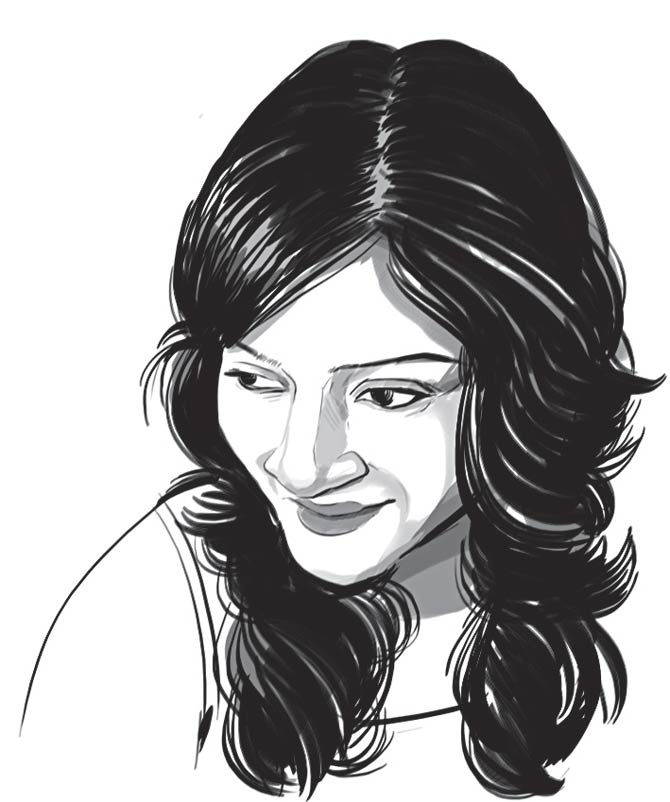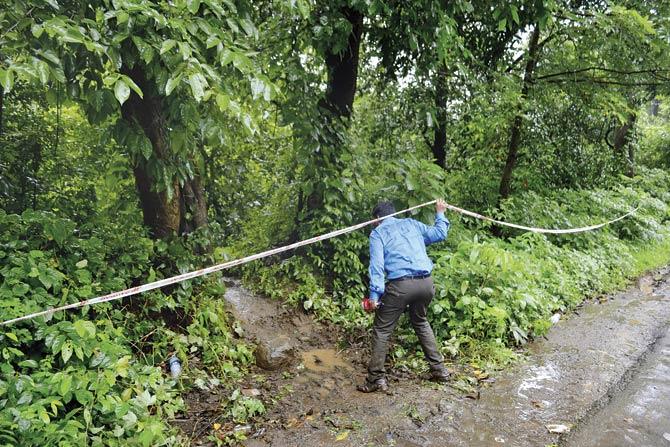In a 26-page report, experts at Nair Hospital have pointed out that the forensic samples handed over by JJ Hospital, contain different bones than those that had been collected by the Pen police in 2012

As the Central Bureau of Investigation (CBI) begins its probe of the Sheena Bora murder case, it will likely also look into the various blunders made by investigating and forensic agencies in the case so far. Adding to the growing list of mix-ups, it now turns out that the forensic samples that JJ Hospital handed over to the Khar police may not even belong to Sheena.
Also read: Maharashtra government hands over Sheena Bora murder case to CBI
ADVERTISEMENT

Bone of contention
JJ Hospital had handed over the samples to the Khar police in August 2015, after which the evidence was forwarded to Nair Hospital. Now, experts at Nair have submitted a 26-page report to the Khar police pointing out that the bone samples don’t match those that had been collected by the Pen police in May 2012.

Sheena’s skeletal remains were found near this spot in Pen on August 28. On the same day, JJ Hospital confirmed that it had found the forensic samples collected by the Pen police in 2012. File Pic
According to the 2012 post-mortem report, the samples collected were the right humerus (long bone from shoulder to elbow), a lock of hair, a patch of burnt skin and two teeth. However, JJ handed over a very different set of samples to the Khar police on August 28: multiple teeth, burnt vertebrae and bones from chest, hair and burnt skin.
In addition, there were some tiny bones, and Nair’s experts aren’t sure whether these are even of human origin. This has now led to massive confusion about where the extra bones have come from, and whom they belong to.
History
When the body was found in Gagode Budruk village in Pen on May 23, 2012, it was Dr Sanjay Thakur, attached to Kamarli primary health centre, who had prepared the spot post-mortem report. In his report, he stated that he had removed the right humerus, two teeth, a sample of burnt skin and a lock of hair from the unidentified body, which was also stated in the first post-mortem report.
Also read: Are Sheena Bora's forensic samples missing again?
Speaking to mid-day, Dr Thakur once again confirmed that he had extracted these four samples and handed them over to the Pen police so they could in turn send the evidence to JJ Hospital for sex, age, and cause of death determination. He admitted that the cause of death could not be ascertained as the body was half-burnt and badly decomposed.
A copy of the spot post-mortem note was given to police, while he preserved his own copy, added Dr Thakur. However, mid-day has learnt from senior officials, that the Pen police did not make a note of what samples they had accepted, and neither did the Anatomy department at Grant Medical College and JJ Hospital, where the samples were sent for forensic analysis.
It was only in December 2013 that the department prepared its report saying the samples sent were inadequate and so the results had been inconclusive. On August 28, JJ Hospital’s dean, Dr T P Lahane gave the samples to the Khar police, which in turn sent them to the department of Forensic Medicine at Nair Medical College.
Nair Hospital has already submitted its report to Khar police and has raised serious concerns over the samples given by JJ Hospital. The report has directed the police to submit the samples to the state Forensic Science Laboratory in Kalina to confirm whether some of the bones are of human or animal origin, and whether the DNA matches with Sheena’s skeletal remains that were recovered last month as well (see Exhumation).
A forensic expert said, on condition of anonymity, that this was a serious lapse on the part of JJ Hospital, which should now answer as to where the extra bones have come from. Experts have also said that the original samples collected by Dr Thakur in 2012 — the humerus, teeth, hair– would have helped in the identification of the deceased.
The burnt skin would also have helped to ascertain what inflammable substance was used to destroy evidence and whether the body had been burnt before or after death.
Passing the buck
When mid-day asked JJ dean, Dr TP Lahane about the discrepancies, he said, “We handed over whatever was given to us, I will have to check with the head of the Anatomy department, Dr Deepak Joshi about the same.” When we contacted him, Dr Deepak Joshi said he was not aware of the details either.
“I recently took charge as professor and head of the department (Anatomy) on July 17. Moreover, at the time the samples were handed over, I was on leave as my father was unwell. I will have to check the records before I make any statement on this,” he said.
However, a doctor attached to JJ Hospital placed the blame on the police and Nair Hospital instead. “We have returned the samples to the police and it is between the Khar Police and Nair doctors to clear the confusion, if at all,” said the doctor.
Filmed and recorded
mid-day has learnt, however, that after JJ Hospital handed over the samples, the police and Nair experts filmed the entire process of opening the sealed envelope received from JJ, and they even documented what samples were received. This, said sources, removed any doubts of the blunder happening on the end of Nair Hospital or Khar Police.
Mumbai police spokesperson DCP Dhanajay Kulkarni did not wish to comment on the issue and redirected this paper to Khar police station, where Senior Police Inspector D P Bhargude said, “I am on bandobast duty and don’t ask me about Sheena Bora case.”
Lawyer speak
According to IPS office-turned-lawyer Y P Singh, this blunder can weaken the prosecution’s case. “This is a serious goof up. The defence can point out that the second sample recovered was not accurate and that it should have matched with the first sample. The defence could also raise serious doubt about the forensic findings, which matched the DNA samples.”
He also questioned how JJ Hospital had given the samples to the Khar police, when as per procedure, they should have returned it to the same department — Pen Police — which had handed over the samples to them originally. There were other serious lapses, such as the fact that the Pen police had not attached proper seals on the forensic samples while sending them to JJ Hospital in 2012.
“There are elaborate instructions contained in the Police Manual and under the Civil Medical Code to properly seal the samples with paper seals signed by panchnama witness, and with the official wax seal,” said Singh. “The medical officer is required to open the seal, conduct the examination of viscera and then seal them again to send it back to the police station.
These returned samples are then used as evidence during the trial of the case. If, however, the inventory of incoming sample does not match with those of the outgoing sample, then it would seriously erode the credibility of all the samples tested by the experts,” he added, calling for a high-level probe against the medical officers and departments that had bungled up the samples.
 Subscribe today by clicking the link and stay updated with the latest news!" Click here!
Subscribe today by clicking the link and stay updated with the latest news!" Click here!







